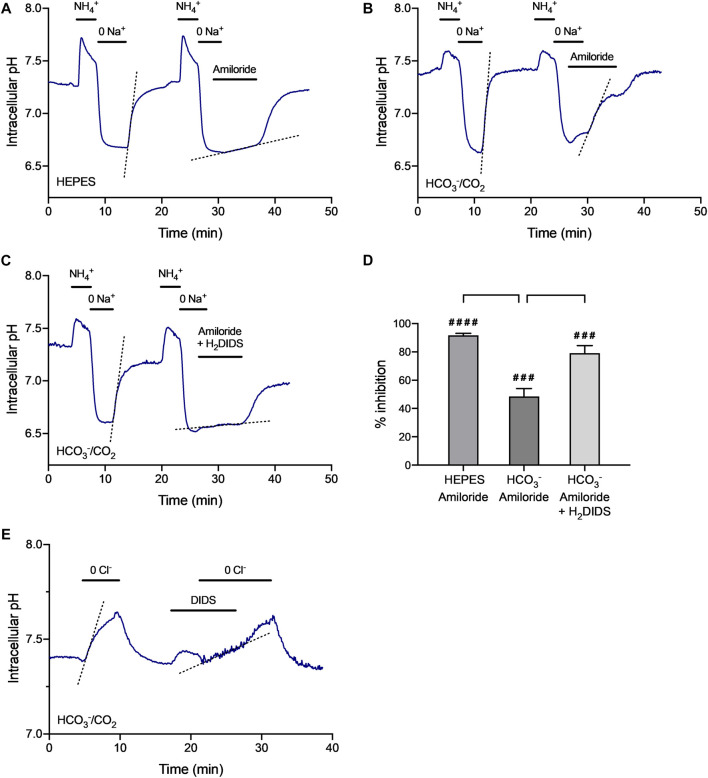FIGURE 5.
| Regulation of intracellular pH in isolated HAT-7 spheroids. (A–C) Recovery of pHi from intracellular acidification evoked by a 3-min exposure to extracellular NH4 + (20 mM) followed by substitution of extracellular Na+ with NMDG+ (0 Na +): (A) in HEPES-buffered bath solution in the absence and presence of the Na+/H+ exchange inhibitor amiloride (0.3 mM); (B) in HCO3 --buffered bath solution in the absence and presence of amiloride (0.3 mM); (C) in HCO3 --buffered bath solution in the absence and presence of amiloride (0.3 mM) together with the Na+-HCO3 − cotransport inhibitor H2DIDS (0.5 mM). Dashed lines show the rate of recovery of pHi when Na+ was restored to the perfusate. (D) Averaged data (mean ± SEM) from 4–6 experiments showing the inhibitory effects of amiloride and H2DIDS on the rate of recovery of pHi from acidification in the absence and presence of HCO3 −. Percentage inhibition was calculated with reference to the internal control in each experiment. ####p < 0.0001, ###p < 0.001 compared with control (one-sample t test). **p < 0.01, ***p < 0.001 (ANOVA and Tukey post-hoc test). (E) Changes in pHi evoked by substitution of extracellular Cl− with gluconate- (0 Cl −) in HCO3 −-buffered bath solution in the absence and presence of DIDS (0.1 mM). Dashed lines show the rate of recovery of pHi when Na+ or Cl− was restored to the perfusate. Measurements of BCECF fluorescence were pooled from 20–50 HAT-7 spheroids isolated from Matrigel matrix by treatment with 0.25% trypsin/EDTA. Traces are representative of 4–6 experiments.

